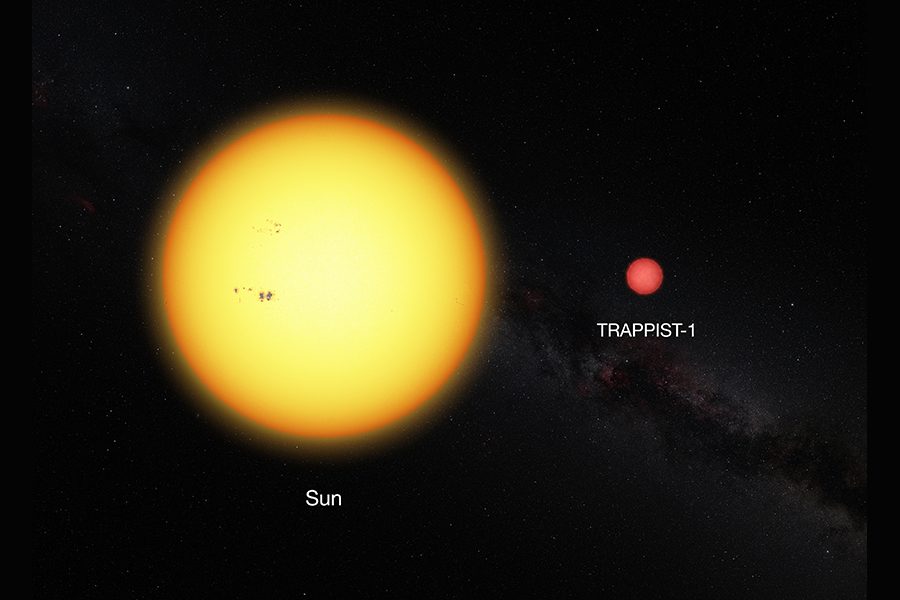7 Earth sized planets found orbiting dwarf star
Comparison of dwarf star Trappist-1 and our Sun
February 28, 2017
Recently, as of Wednesday, February 22nd, NASA has announced that seven exoplanets have been found, each the size of earth, orbiting the same dwarf star; and at least three with the potential to hold life. The planets were found approximately 40 light-years (235 trillion miles) away, which, despite seeming far away to human minds, is actually close in comparison to the rest of the universe. The system has been named Trappist-1.
Nikole Lewis, a telescope project scientist stated, “It’s just I never would’ve predicted this. It’s beyond anything I could’ve ever dreamt of.”
The planets are all in close proximity to each other, due to the star they’re orbiting being much smaller. In comparison to our solar system, the planets are closer to their star than Mercury is to ours. The star, however, is much cooler; thus the planets don’t immediately combust upon being so close to the star. The planets may also be tidally locked with Trappist-1, meaning it’s always day or night on either side of the planets, but it is not known for sure.
Density readings have shown that the planets may be rocky and solid; all the planets seem to have similar densities. Further observations will be made to see whether or not the planets have water in them or outside of them; and if life can be found or be sustained on any of the planets.
Sean Carey, manager of the Spitzer Science Center sai “The big news is that around a very nearby, cold, small star, we found seven rocky, Earth sized planets, all of which could potentially have liquid water.”
The search for life outside of Earth is still a hard topic among scientists, but because of discoveries such as Trappist-1, those in this scientific field have hope for answers on whether there truly is life outside of Earth.
Quotes and information was obtained from: YouTube




